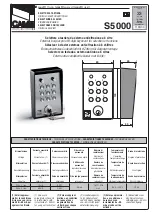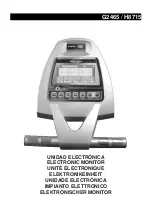
Using, Creating and Editing the
A
uto
Accompaniment Styles
Style Creator
CGP-1000 Owner’s Manual
118
Creating a Style
You can use one of the three different methods described below to create a Style.
The created Styles can also be edited (page 123).
■
Realtime Recording
➤
See below
This method lets you record the Style by simply playing the instrument. You can
select an internal Style that most closely matches your image of the Style you want
to create and then re-record parts of the Style as desired, or you can create a new
Style from scratch.
■
Step Recording
➤
This method is like writing music notation on paper, since it allows you to enter
each note or individually, and specify its length.
This allows you to create a Style without having to play the parts on the instrument,
since you can enter each event manually.
■
Style Assembly
➤
This convenient feature lets you create composite Styles by combining various pat-
terns from the internal preset Styles. For example, if you want to create your own
original 8-beat Style, you could take rhythm patterns from the “70’s 8Beat” Style,
use the bass pattern from “ 60’s Rock1” Style and import the chord patterns from
the “Cool8Beat” Style—combining the various elements to create one Style.
Realtime Recording (BASIC)
Create a single Style by recording the individual channels one-by-one, using real-
time recording.
Realtime Recording Characteristics
• Loop Recording
Style playback repeats the rhythm patterns of several measures in a “loop,” and
Style recording is also done using loops. For example, if you start recording with
a two-measure main section, the two measures are repeatedly recorded. Notes
that you record will play back from the next repetition (loop), letting you record
while hearing previously recorded material.
• Overdub Recording
This method records new material to a channel already containing recorded
data, without deleting the original data. In Style recording, the recorded data is
not deleted, except when using functions such as Rhythm Clear (page 120) and
Delete (page 120). For example, if you start recording with a two-measure MAIN
section, the two measures are repeated many times. Notes that you record will
play back from the next repetition, letting you overdub new material to the loop
while hearing previously recorded material.
When creating a Style based on an existing internal Style, overdub recording is
applied only to the rhythm channels. For all other channels (except rhythm),
delete the original data before recording.
Rhythm 1
Rhythm 2
Bass
Chord 1
Chord 2
Pad
Phrase 1
Phrase 2
Rhythm 1
Rhythm 2
Bass
Chord 1
Chord 2
Pad
Phrase 1
Phrase 2
Rhythm 1
Rhythm 2
Bass
Chord 1
Chord 2
Pad
Phrase 1
Phrase 2
Rhythm 1
Rhythm 2
Bass
Chord 1
Chord 2
Pad
Phrase 1
Phrase 2
60’s Rock1
70’s 8Beat
Cool8Beat
















































